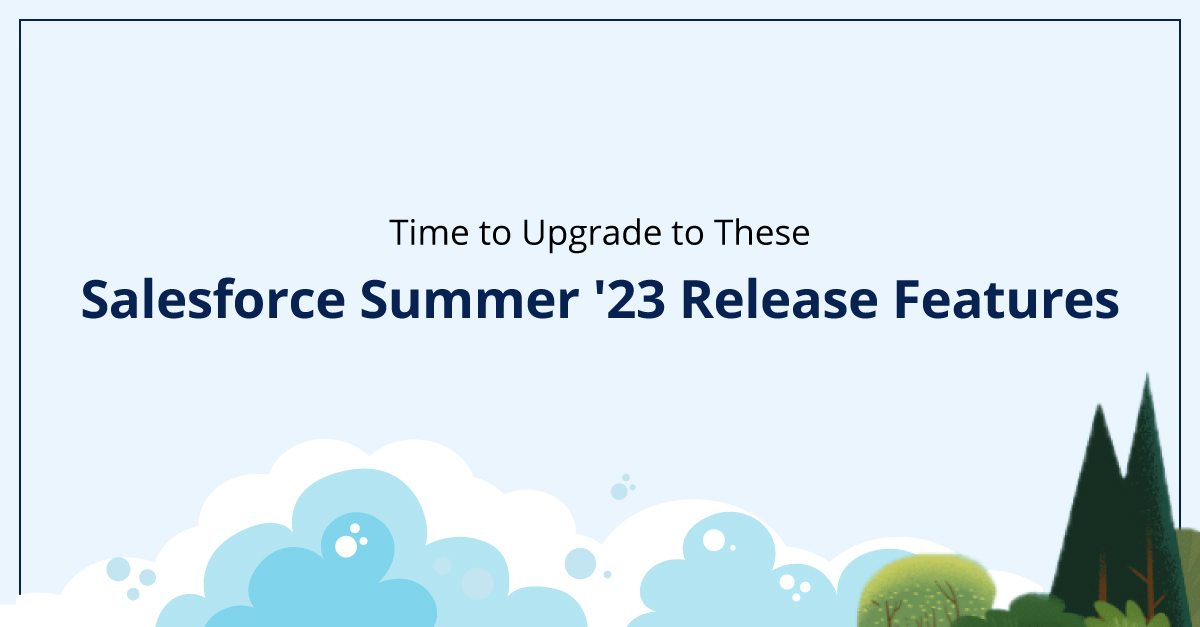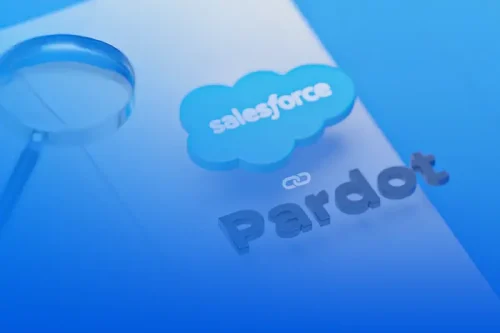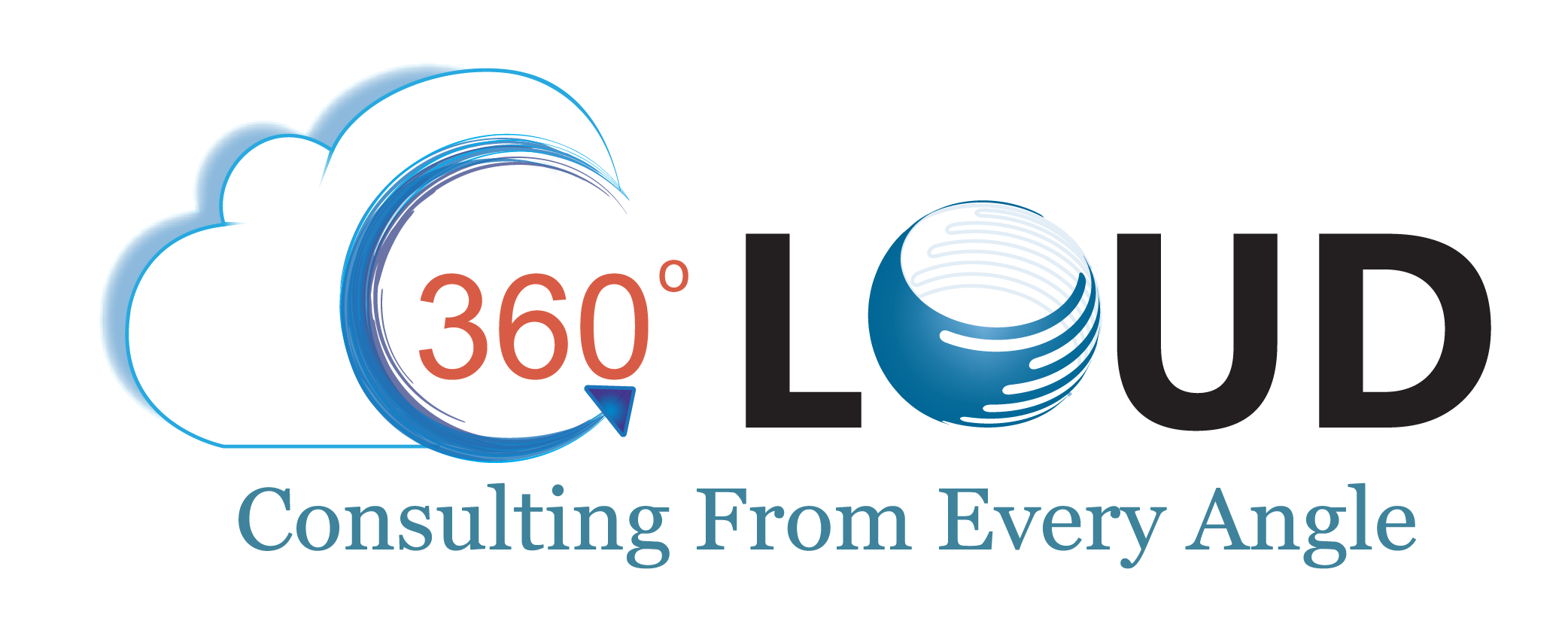Upgrade to Summer ’23 Features with a Salesforce Certified Consultant
30 Jun 2023
Table of Contents

Just like every Salesforce release, Summer ‘23 was also able to keep up with the expectations of Salesforce users, developers, and administrators. Whether it is for enhancing usability or simplifying development, Salesforce has added features and upgrades that take productivity with Salesforce to the next level. If you have not got your hands on these new features, it’s your cue to get along with a Salesforce certified consultant to implement them.
As we’ve been going through the new features and upgrades from the release, we found a few that were very prominent and would be highly useful for developers and admins. In this blog, we’ll be guiding you through the best features that are worth trying out.
Table of Contents
Salesforce Summer ’23 Release: Top Features To Try Out
We, as a Salesforce certified partner, are always active to grab onto the latest Salesforce features. With all the amazing features that came up with Salesforce Summer ‘23 releases, here are some that caught our attention:
1. Quick Actions on Related Lists
Before this new release, Salesforce administrators did not have any way through which they could have added customized quick actions to the related lists. They used to add actions on the highlighted panel that directly impacted the user experience.
With the new release, you can use custom quick actions on the related lists. This will enable users to configure these quick actions on both Dynamic Related List and Page Layout Editor. The feature now supports Create/Update Quick Actions.
2. Dynamic Forms on Mobile
One of the most appreciated features of the release is Dynamic Forms on Mobile. Many Salesforce users have been looking for a way to offer a simpler experience to end users while they are on the move.
Dynamic Forms will be available on an opt-in basis. You have to remove the Record Detail for pages that you already have upgraded to Dynamic Forms. After that, forms and mobile components from the page will be available on mobile.
3. POST HTTP Callouts (Beta)
Now you can send out Salesforce Data to an external service without the need for code. This could be done with HTTP Callout. The feature allows you to add Salesforce data to external services declaratively. This ultimately helps to reduce the dependency on Salesforce developers.
This enables users to create a reusable HTTP Callout action and use POST for performing callouts that will be able to add a resource to any HTTP-based API. If you want to leverage this feature, getting help from a Salesforce certified consultant could be a great move.
4. App Clone
A new enhancement has been added to App Manager with the new release, known as App Clone. There are times when admins require creating multiple customized applications for different departments in the business where similar use cases can be applied. It’s obvious that these applications would have some differences, but still, building each application from scratch would be a lot of time-taking.
That’s where App Clone would help them easily make clones of an application. All you have to do is select a custom app within the App Manager and select Clone from the drop-down list. If you face any confusion about it, reach out to a Salesforce certified consultant for assistance.
5. New and Changed Lightning Web Components
Just like every other release, Salesforce even brought some changes for Lightning Web Components with the Summer ‘23 release. The components lightning-card and lightning-tree-grip have received some new attributes. There are some changes with the lightning-icon component to meet WCAG 2.1 accessibility standards.
In addition to this, for some components, the heading tags are added with an aria-level attribute. This will be used for differentiating heading levels for ARIA-compliant screen readers.
6. Quickly Create Full Sandboxes (GA)
For some time, this feature was there in beta. But with Summer ‘23, Salesforce users would be able to create full Sandboxes, which will be available for eligible Hyperforce orgs. The sandboxes would be created quickly, making it easier for teams to devote more time and focus on actually developing and testing Salesforce solutions. They won’t have to keep sitting and waiting for sandboxes to get built.
7. Transfer Ownership of a Package to a Different Dev Hub
With the latest release, the feature has been made generally available, which provides Salesforce users with the ease to transfer ownership related to any second-generation managed package or an unlocked package from one Dev Hub to another one.
Salesforce users would be able to perform the transfer internally between the two Dev Hub orgs that you own, or you can even make an external transfer to another Salesforce partner, customer, or any ISV partner. This feature has provided users with a better way to sell a second-generation managed package or any unlocked package.
Whenever you want to start with the package transfer, all you have to do is log a case with either Salesforce Customer Support or Salesforce Partner Support.
Access Summer ‘23 Features Now: Hire a Salesforce Certified Developer
With all the new releases, Salesforce enables everyone in the community to leverage the platform in a better way, enhancing productivity and user experience. It delivered the same with the latest features from Summer ‘23 release.
Try out the above-mentioned features and witness the new levels of ease and efficiency while using the solution. Or you can contact us to hire a Salesforce certified developer who can help you leverage these features so you can use them conveniently for your business.
About the author
Editorial Team – 360 Degree CloudThe Editorial Team at 360 Degree Cloud brings together seasoned marketers, Salesforce specialists, and technology writers who are passionate about simplifying complex ideas into meaningful insights. With deep expertise in Salesforce solutions, B2B SaaS, and digital transformation, the team curates thought leadership content, industry trends, and practical guides that help businesses navigate growth with clarity and confidence. Every piece we publish reflects our commitment to delivering value, fostering innovation, and connecting readers with the evolving Salesforce ecosystem.
Recent Blogs
 Salesforce Services
Salesforce Services
How Salesforce Managed Services Optimizes Your Licenses
For many organizations, the annual Salesforce renewal process feels less like a strategic investment and more like a mandatory expense hike. The harsh truth is…
Read More Salesforce Clouds
Salesforce Clouds
Top 10 Salesforce Integration Tools to Connect Your Tech Stack
Gone are those days when businesses used to rely on one or two systems to manage their operations. In this modern tech ecosystem, businesses use…
Read More Salesforce Clouds
Salesforce Clouds
Pardot Salesforce Integration: How Do Both Platforms Work Together?
There has been a constant division between Sales and Marketing teams in many organizations that can directly bring harm to the business. The marketing team keeps…
Read MoreReady to Make the Most Out of Your Salesforce Instance?
Our Salesforce aces would be happy to help you. Just drop us a line at contact@360degreecloud.com, and we’ll take it from there!
Subscribe to our newsletter
Stay ahead with expert insights, industry trends, and exclusive resources—delivered straight to your inbox.



